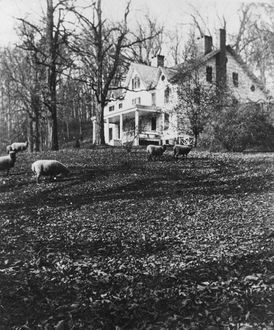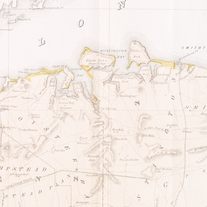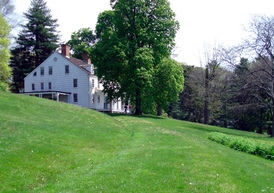This 1910 image shows some of the alterations to the house made by subsequent owners, particularly evident in the roofline. The Manor served as a plantation and in 1790 the census recorded 10 people as slaves including an elderly Jupiter Hammon.

Joseph Lloyd Manor
Granted to James Lloyd I in 1685, Lloyd Manor encompassed approximately 3,000 acres of land on the north shore of Long Island. The Manor supplied the Boston-based merchant family with cider, cordwood, and clay among other inventory. It wasn't until 1711 that the first Lloyd, Henry, took up residence. That same year Henry Lloyd recorded the birth of a slave named Jupiter Hammon on Lloyd Neck.
Raised and educated with the Lloyd children, Hammon is the second known published American author of African descent. Seven pieces of his poetry and prose survive. Hammon's writings were published as broadsheets, and may have also been delivered as speeches. His work addressed both black and white audiences about the injustices of slavery, and was rooted in his Christian faith. Hammon, however, was not the only person enslaved on Lloyd Neck. Seasonal labor needs were great and the family used both free wage laborers and enslaved people to meet those needs.
When Henry Lloyd died he divided the Manor between his four sons. Joseph Lloyd, the only son to remain on Lloyd Neck, also inherited Jupiter Hammon. Hammon and Lloyd remained on the Neck until forced off by British troops. Joseph left for Hartford, Connecticut taking Jupiter with him. In 1780, Joseph Lloyd took his own life and willed Jupiter to his nephew, since he had no children of his own. Jupiter was brought back to the Neck, and census records document the Lloyds' possession of 14 other slaves on Lloyd Neck by 1790. Recent archaeological research seeks information about the others enslaved by the Lloyd family as little is known of their day-to-day lives.
This entry contributed by the Center for Public Archaeology at Hofstra University




